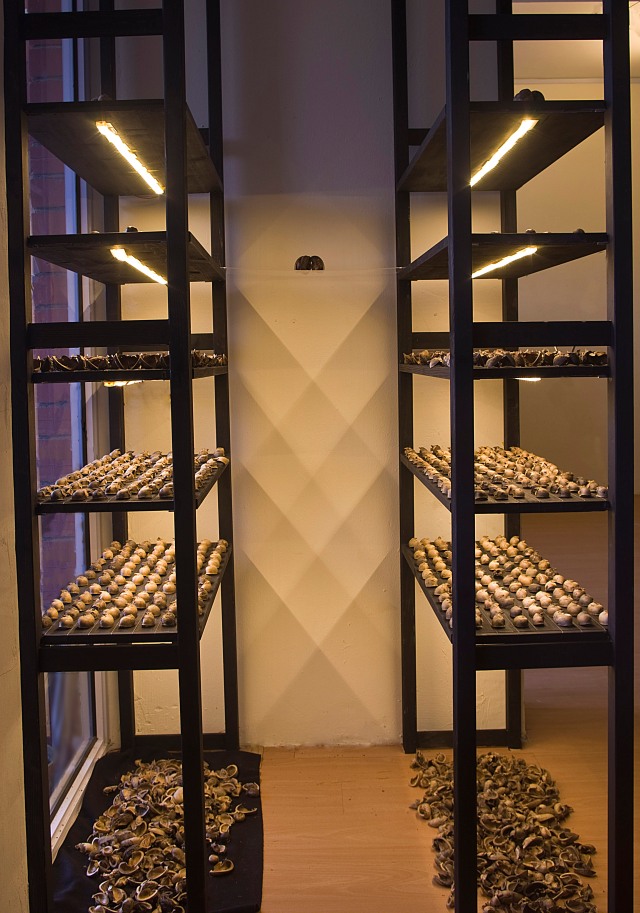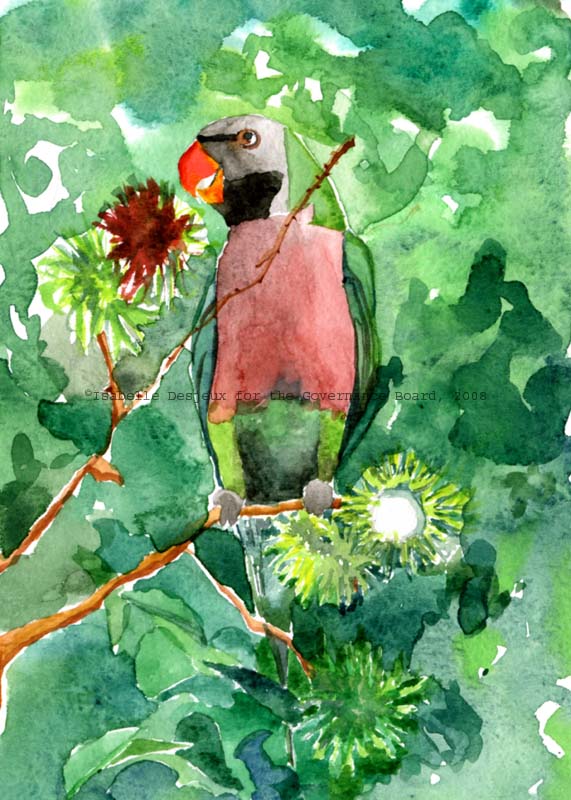1000 Rubber Seeds and One Mutant 2014
As part of my growing collection of Laboratories, this installation recreates the laboratory of a scientist dedicated to understand “Why” and How” the rubber pods explode. Outside the institutional laboratory, a scientist is still a scientist, looking at the world with curious eyes, and devising experiments to understand it and answer their hypothesis.
“1000 Rubber Seeds” is a Singapore-based artwork. Before becoming a large industry there, the seeds of Hevea brasiliensis had to be imported from Brasil. A first attempt to bring the tree to the East from Brasil involved 1000 seedling, none of which grew successfully. In 1888, when rubber was successfully introduced to Singapore, the collection contained 1000 seedlings…
Many years later, Rubber plantations covered more than 40% of the cultivated space in Singapore. More than 50 years later, the humble rubber has been replaced by silicon and artificial rubber in the industry, and new buildings have sprouted where the rubber plantations once stood. The rubber seed, its pods and shells have become icons that few people have handled or seen in real life. But they are still an interesting model for studying seed dispersal.
Rubber pods are known to explode in order for the seeds to disperse. Immediately, our first questions are “Why?”, followed almost instantly by “How?” The installation is part of a real-life experiment where large numbers of rubber seeds are collected in the hope of finding a small percentage of mutants, and the answer to these questions.
To understand how a system works, it helps to look at how it can fail. This is what scientists do when they embark on a genetic screen, designed at understanding how a complex process is controlled by genes.
The scientist’s work, entitled “Screening for mutations affecting the explosion in pods of Hevea brasiliensis“, consists of looking through a large collection of rubber seed pods in order to identify pods that are morphologically different and do not “explode” as the majority of them do.
The collection, consisting of 1000 individual pieces, plus a few “mutants”, in the form of drawings and photographs, echoes the kind of work scientists do in the lab when they are looking for “the special one”. Much information can be gathered from careful observation of large numbers of similar individuals, and variations. Here, on the shelves, are presented the “rejects” of the screen, deemed too normal to be studied further.
You may then ask “What is a mutant?”
First exhibited at MinimArt 5.0 at the Substation in January 2014
Exhibited at the Singapore Art Museum March-July 2014
In The Museum setting, the site-specific installation was drastically changed. What remains is a large display of seeds, giving a notion of scale to the work of the scientist. A lab bench was added, showing where the scientist does the work. This interactive space allows the viewer to place themselves in the spot of the scientist. On the other side, a large display of 100 photographs of rubber shells, complete with matching postcards, give the visitor the opportunity to feel what a genetic screen is like: in order the spot the “different one”, you must first train yourself to understand how much variation is normal. The 100 pictures offer this variety.





























